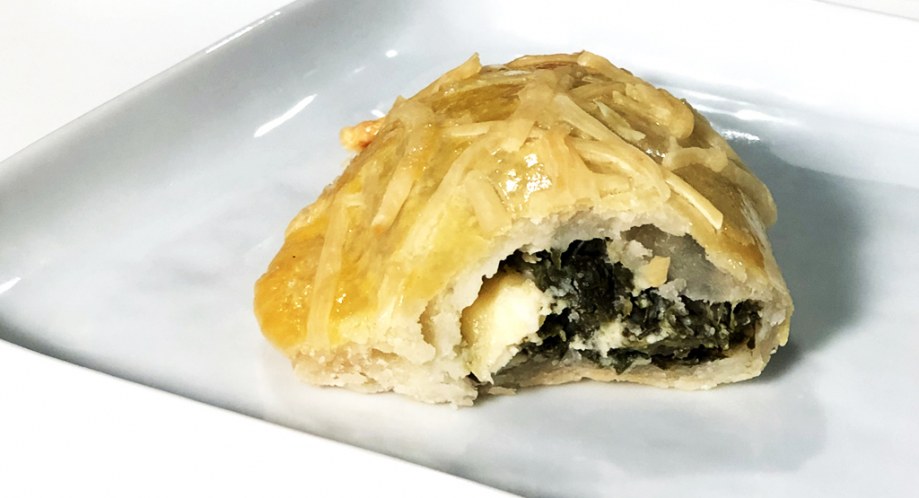BOUREKAS: CHEF TALK and COOKING PROGRAM on Savory Sephardic Spinach and Cheese Pastries
The flaky stuffed börek — a pastry that once made its way up to the highest level of court cuisine in the Ottoman Empire — has long been revered in Mediterranean and Central Asian cooking. While it is difficult to pinpoint exactly when and where the first börek was created, recent research has uncovered clues that lead back to the Nomadic Turks of Central Asia from before the seventh century. During their many travels the Turks carried their recipe with them from east to west, and by the 11th century the börek had become a staple in Anatolian (Turkish) cuisine.
Today, börek can be found with different fillings under a variety of names throughout the Mediterranean, North Africa, the Middle East and Central Asia. In Bosnia, burek is spiral shaped and filled with cheese and eggs, while in Crete boureki is more like a double-crusted pie filled with zucchini, potatoes and feta. Bulgarian byurek is a flaky pastry pie filled with eggs, cheese, and yogurt, while Tunisian and Algerian brik/brick is triangular filled with tuna and eggs and pan fried. In Turkey, fried cigare-shaped sigara böregi with a salty white cheese and parsley are one of the dozens that are prepared. And in Israel different shapes and toppings are used to distinguish bourekas filled with cheese or meat for the purpose of kashrut.
How did the börek become a part of the Jewish cuisine of the Sephardim? The Jews of the Iberian Peninsula adopted the popular Spanish empanada and adapted it to their own tastes. Expelled by Christian monarchs during the Spanish Inquisitions in the 15th century, many Jews fled to more tolerant regions in the Ottoman world, bringing their hand pies with them. In Istanbul they discovered the börek, and over time a Jewish hybrid evolved that was half-moon shaped using a thicker dough.
This interactive hands-on seminar will teach you how to make this loved pastry. Participants will come away with an increased understanding varying types of this cherished food and how it lives on in Sephardic communities today. (And you don’t have to be Sephardic — or Jewish — to enjoy it!)
GENERAL INGREDIENTS:
All-purpose flour
Kosher salt
Vegetable, sunflower, safflower or canola oil
Fresh baby spinach leaves or frozen and defrosted chopped spinach
Fresh dill
Eggs
Feta cheese
Farmer cheese
Coarsely grated/shredded Parmesan cheese (optional)
Sour cream or thick Greek style yogurt (optional)
EQUIPMENT:
Measuring cups and spoons
Chef’s/large chopping knife
Cutting board
Medium mixing bowl with spoon
Small saucepan
Pastry brush or folded piece of paper towel
1 or 2 large baking sheets or trays
Parchment paper for lining tray or silicone baking sheet

